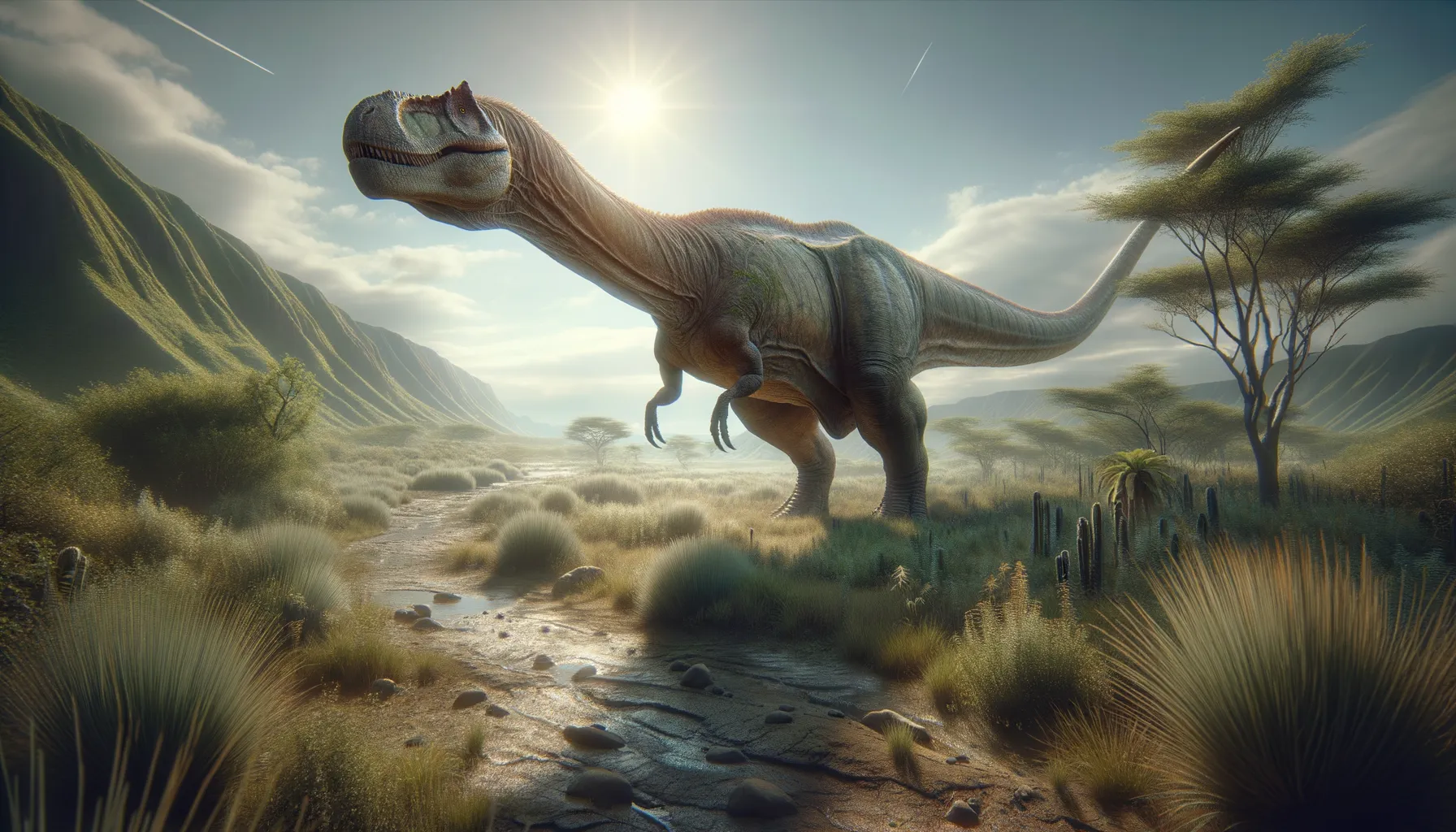
Patagotitan
The gentle giant of the dinosaur world!
Period
Cretaceous
Length
About 120 feet long from head to tail.
Height
Approximately 20 feet tall at the shoulder.
Weight
Estimated to weigh around 60 to 77 tons.
The Patagotitan was a colossal herbivorous dinosaur from the Cretaceous period. It roamed the southern parts of present-day Argentina and is renowned for being one of the largest animals to have ever walked on Earth. Discovered in 2013, Patagotitan represents a significant find in understanding the size and distribution of large sauropods.
Diet
Patagotitan was a herbivore, feasting on vast amounts of plant material. Its diet primarily consisted of ferns, cycads, and conifers, which were abundant during its time.
Hunting
As a herbivore, Patagotitan did not hunt but rather foraged for plants. It used its long neck to reach vegetation high above the ground.
Environmental challenges
Patagotitan faced challenges from a climate that was relatively warm, leading to periodic changes in the vegetation landscape. Occasional resource scarcity would have demanded extensive migrations to find adequate food. Seasonal dry spells could also pose a threat to their survival.
Speed
Relatively slow due to its massive size.
Lifespan
Estimated to be several decades long.
First discovery
Discovered in Patagonia, Argentina in 2013.
Fun Facts
- Patagotitan was one of the largest dinosaurs ever discovered, estimated to have been over 120 feet long.
- This gigantic dinosaur roamed what is now Patagonia, Argentina around 100 million years ago during the Late Cretaceous period.
- Despite its massive size, Patagotitan was a herbivore, feeding on the abundant plant life of its time.
- The name 'Patagotitan' means 'giant from Patagonia,' reflecting both its enormous size and location of discovery.
- Fossils of Patagotitan were first found by a local farm worker in 2012, leading to years of excavation and study.
- Patagotitan's bones are so massive that the femur alone measures over eight feet in length, taller than the average human.
- Some of the most complete skeletons found allowed scientists to develop 3D models to better understand its gigantic stature.
Growth and Development
Like many large sauropods, Patagotitan experienced rapid growth during its early years. Its massive size suggests a long juvenile stage before reaching full adulthood. Developing a skeletal structure robust enough to support such immense weight was a critical aspect of its growth.
Habitat
Patagotitan roamed what is now South America, particularly in regions that were lush with forests and floodplains. This environment provided ample food resources necessary for its survival. The area also featured rivers and abundant vegetation, favoring its herbivorous lifestyle.
Interaction with other species
Patagotitan shared its habitat with various other dinosaur species, including smaller herbivores and potential predator species. Its immense size likely protected it from most predators. Coexistence in this ecosystem required avoiding competition for resources with other large herbivores.
Natural lifespan
Patagotitan likely lived for several decades under natural conditions.
Reproduction
Patagotitan, like other sauropods, likely laid eggs in nests. Clutch sizes might have been large to increase the chances of survival against predators. Hatchlings faced high mortality rates but those that survived early life grew rapidly.
Social behaviour
Patagotitan may have lived in groups or herds, offering protection against threats. Social behavior could also involve cooperative care for young and collective foraging. Some evidence suggests they might have migrated seasonally in search of food.
Fossil locations
Patagotitan fossils have predominantly been found in Argentina's Patagonia region. The discovery sites consist of numerous bones, contributing valuable information about their anatomy. These finds have garnered interest from paleontologists worldwide, enhancing the understanding of titanosaurs.
